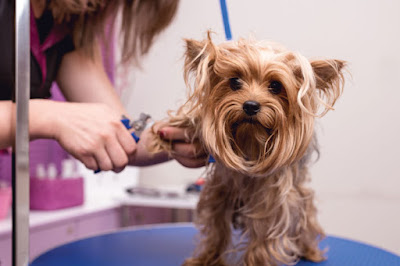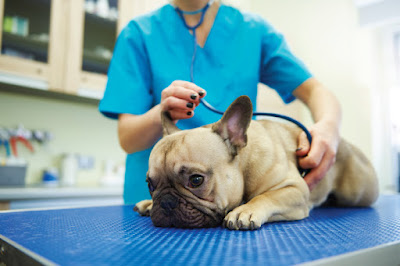Regardless of the pet you have, it is likely they will require grooming at some point. For more traditional pets like cats and dogs, you have options when it comes to how you go about grooming your pet. If you’re handy with the combs and clippers, chances are you can manage your pet’s groom yourself. However, some pets have multiple coats or difficult-to-manage fur, which can require professional attention. Your pet must behave well during the groom, to make the process easier on themselves and their groomer.
Why Should I Groom My Pet?
You may be wondering, why is grooming so important? Much like you bathe and groom yourself, your pet requires similar care to remain fresh, clean, and healthy. Grooming is not merely for aesthetics since it helps with your pet’s health as well as their general appearance. Here are a few reasons why grooming is important for your pet.
- Grooming helps remove matting. This is especially
important if you have a pet with a long coat, as once their fur matts there is
little choice but to shave the spot. Frequent grooming will prevent matting and
the subsequent bald spots caused by it after it is removed.
- Grooming helps remove loose fur. This is especially helpful for pets with thick winter coats or heavy undercoats and keeps your pet comfortable. It is also a necessary process if your pet is a heavy shedder.-
- Grooming removes unwanted pests and parasites. Frequent brushing and grooming will help you clean out fleas, flea eggs, ticks, and other undesirable pests from your pet's fur. These pests can cause diseases if left unchecked, so a groom reduces your pet's chances of catching a tick/flea-related disease.
- Grooming helps curb potential infections. Pets with longer hair or fur can have problems with their eyes, paws, or their backside. Since longer hair means more room for unwelcome parasites, it is better to frequently groom these areas. Any dog owner who has a long-haired breed will vouch for the fact that walks and poop time is easier when their pet’s rear isn’t full of long hair.
Commonly Observed Issues During a Groom
So, if grooming has so many benefits, why don't all pet parents visit a groomer regularly? There are various factors, but the most cited one is that the pet lashes out or is fearful of the grooming process. A groomer comes across pets of all kinds while on the job, and while some pets are extremely friendly and docile, others may be nervous/anxious/angry at the prospect of a groom which could potentially become an issue.
Here are a few commonly observed problems during a groom:
- Making Noise: Pets who are nervous or anxious can display that feeling in the form of noise. Barking, howling, or whining are all noises that can disrupt the groom and disturb any other animals who are there for a session.
- Anger: Pets may show their discomfort with the situation by displaying anger. Lashing out, biting, scratching, and other unsociable behaviour may be observed if a pet is distressed.
- Squirming: Thrashing, struggling, trembling, or running away are also behaviours a distressed pet shows at the groomers. While more common than an outright aggressive pet, such behaviours can also complicate a groom and make it a longer process than it is.
Tips to Ensure a Smooth Groom
Any of these behaviours can disrupt the groom and potentially cause problems for the groomer, since other animals in the vicinity may become agitated when in a relatively closed space with a loud stimulus. Groomers themselves reserve the right to refuse to groom an aggressive or challenging pet. Such behavioural issues are also not limited to a groom and can become a potential issue if not addressed. Fortunately, with the right preparation and a little training, your pet should be as comfortable with the groomers as they are at home. Here are a few steps you can take.
- Make Sure Your Pet is Happy Before the Groom - It’s a simple fact that a happy pet is more likely to behave than one who is uncomfortable or anxious. If your pet is in discomfort, hungry, thirsty, or tired before a groom, chances are these feelings will display themselves while they are being tended to by an unfamiliar person.
- Acclimate Your Pet to Social Situations - Most sights and smells considered normal by us in day-to-day life are unusual to our pets. if a pet is not used to equipment like a nail cutter, a fan, or a pair of clippers and combs, consider socializing them further so they may become comfortable in such scenarios. Groom your pet yourself as a start, clip their nails and comb their fur so they get a feel for the grooming equipment. If your pet is touchy about you clipping their nails, chances are the groomer won’t have a much better time.
- Meet the Groomer Before a Groom - Different groomers operate and specialize in different equipment and animals. When you’ve settled on a groomer, visit them, and discuss your pet. Be open and honest about your pet’s general behaviour, temperament, and any potential problems that may arise. An open dialogue will help the groomer prepare for your pet, especially if you’ve chosen a good groomer who understands a pet parent's concerns. You can also familiarize the groomer with your dog’s training commands for an easier experience.
- Sit in on a Grooming Session - If your pet is known to be anxious around strangers, your presence during the groom should soothe them and help prevent any undesirable behaviour. Doing so will also have the added benefit of you being able to spot any stressors, which you can then work on later. Most groomers should allow you to sit in on a groom, after which you can consult your vet or a pet specialist depending on the outcome.
To conclude, a pet being difficult to groom is a common occurrence. The good thing is that with a little patience and just a little trust, your pet will soon be as comfortable with their groom as they are at home. Grooming is an important part of pet care if you frequently embark on pet travel, as an ungroomed pet is more likely to carry ticks and parasites, none of which a country will permit entry to. Make sure to choose a reputable or recommended groomer and train your pet beforehand to have the best possible pet grooming experience.
-




